Ukraine is using a variety of different artillery systems to defend itself from Russian aggression. Due to the…
Top 10 Metroidvanias To Play Right Now
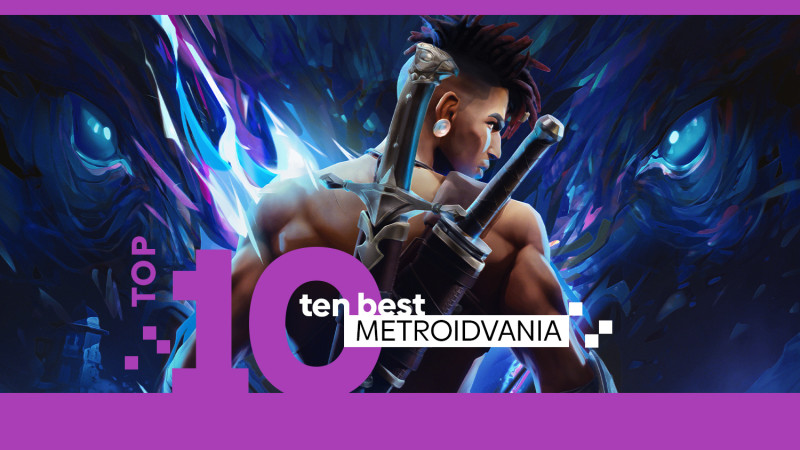
PlayStation 4, Xbox One, Switch, PC, iOS, Android
Bloodstained may as well be called “Castlevania: Symphony of the Night 2”. After all, it comes from Symphony’s mastermind and Castlevania luminary Koji Igarashi and carries many of the series’ classic elements while introducing cool new ideas on top. Players explore a gothic castle overflowing with secrets while slaying supernatural foes using weapons such as swords, axes, and, of course, a whip. Killing enemies feels extra rewarding since they drop shards that bestow cool powers that can turn the tide of battle. The more shards you collect, the more comprehensive your ability pool to create multiple loadouts suited for any situation. When you aren’t fighting the forces of darkness, you help surviving townsfolk by completing bounties, farming crops, cooking recipes, and other engaging diversions. Best of all, a ton of post-launch updates have only sweetened Bloodstained’s package. If you’ve been dying for something more “Vania” than Metroid, Bloodstained is a must-play. | Our Review
Four Ways Prince Of Persia: The Lost Crown Gets The Genre Right
The revival of this long-dormant franchise moves into the gear-and-power-gated family of games colloquially termed Metroidvanias, thanks to its similarity to early classics like Super Metroid and Castlevania: Symphony of the Night. It’s a genre that has been gaining traction in recent years, but Ubisoft’s return to the Prince of Persia franchise is one of the best we’ve seen in a long time. It’s even managed to make a spot for itself on our list of the Best Metroidvania Games you should make a point to play.
The Lost Crown is also notable for the way it advances this game style with novel ideas and mechanics. While not everything on this list is brand new, these features combine to make Ubisoft’s new adventure one of the most rewarding, approachable, and satisfying releases in the genre, and an early standout release at the beginning of 2024.
All About The Map
Early games like Super Metroid offered a large map for exploration, but much of it was unavailable until you had additional capabilities. That defining feature of the genre is present in The Lost Crown, but it allows clever players to leverage several in-game systems to reduce aimless wandering and instead keep the focus on interesting encounters and puzzles.
The most significant way it does that is through Memory Shards, which let players capture a screenshot of a specific location they’re standing in, and that screen then appears on the main map, viewable just by scrolling over it. It’s a simple but extremely helpful tool that resembles common jigsaw puzzle techniques. When you find a puzzle piece with an unusual or notable shape or image, you set it aside and wait to find its match. Here, you locate a particular insurmountable obstacle and set it aside until you have the matching power to surmount it.
On top of that, The Lost Crown’s map supports thoughtful and customizable navigation, such as distinct markers a player can put down to indicate different targets, as well as a choice between exploration and guided mode. The latter lets players see where the subsequent major story-progressing sequences are but doesn’t tell you how to get to them; the fun of discovery is still there, but it’s not as aimless or as dependent on in-world clues as exploration mode.
The game also adds a simple but surprisingly helpful tool around save points. In many games of this style, a wrong turn can mean that you miss a critical save point by turning left when that desperately needed save point was to the right. In Prince of Persia: The Lost Crown, a clearly identifiable golden wind appears in nearby chambers that lead to a save point, helping ensure you don’t miss it. It’s a meaningful aid and takes away an element of frustration and difficulty that was never really an enjoyable aspect of the genre.
A Consistent And Uniting Theme
Prince of Persia games have always been about the concept of time in one way or another, but The Lost Crown takes that focus to a new level. By making the entire game – from storytelling to mechanics – focus on the nature of time, the totality feels united and compelling.
Sargon’s journey across Mount Qaf sees time constantly in flux, with story elements suggesting that time is both mutable and can change based on our perception of it. But rather than just discussing that concept in the storytelling, the entire game revolves around time. Your powers are all about the manipulation of time and space. Distinct areas across the map play with unusual twists on time – from day and night cycles to dramatic frozen moments. Even combat and traversal rely heavily on careful observation and timing to find any measure of success.
The result is a game that feels like it’s communicating a cohesive theme across all its facets.
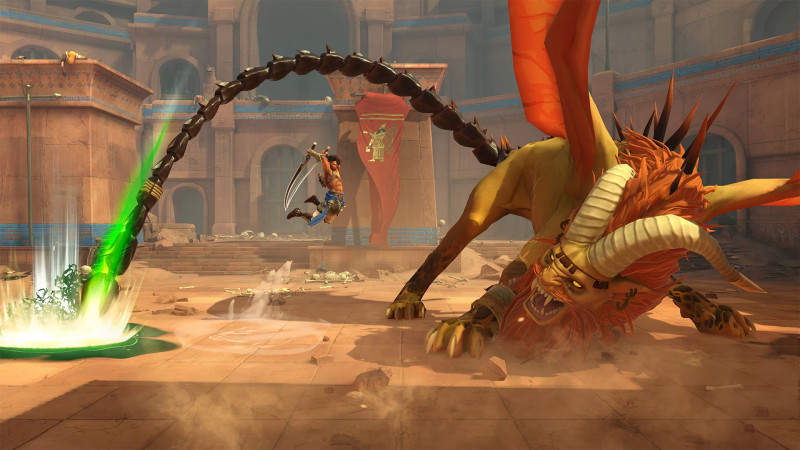
Focus on Precision
Exploring a vast open map, backtracking to earlier locations, and solving navigation challenges are all concepts that appeal to a mindset of careful observation and thinking. So why would a game like this also veer into imprecise and wild approaches to action? Prince of Persia: The Lost Crown keeps precision play a staple across all elements of gameplay.
Combat in the game is always about watching your enemy and reacting intelligently to their attacks. Mastery of parries, dodges, dashes, and jumps is as crucial as any sword or bow attacks you might wield. The combat provides a refreshing and challenging approach, with regular injections of new attack and defense options, an increasingly complex array of enemies to parse, and bosses that demand careful use of available powers.
Likewise, traversal sequences are often about extremely precise button presses to avoid Mount Qaf’s many traps and dangers. After decades of playing games, it’s rare that a puzzle or navigation area feels genuinely new or surprising to me. But Prince of Persia: The Lost Crown frequently provides that sensation, with tricky moments that left me smiling at the clever structures.
From a design perspective, the game also uses its play spaces with precision. If a room is large and open, there’s often a reason for it, encouraging players to attempt to reach its furthest and highest corners. If a combat chamber is tight and constrained, it forces the player to leverage every ability to confront an enemy’s capabilities.
The insistence on precision increases the sense you’re playing a game that demands attention and observation at every turn – there’s little in the way of boring moments since every action, reaction, and direction you move has a purpose and the threat of danger.
Accessible to All
Increased attention on accessibility for all players has been a big focus for game developers in recent years. It’s been incredible to see game makers working hard to make their games playable and enjoyable by the largest percentage of players. In this arena, Prince of Persia: The Lost Crown leads the genre of Metroidvania titles in many ways.
High-contrast visual mode options ensure aid for players with specific color blindness and other low vision needs; The map tracking and memory shard feature helps players with visual memory issues; A platforming assist option lets players jump past the most complicated traversal sequences with a unique portal system; Combat difficulty can be fully tweaked to make timing windows more generous, add additional aim assist, and more; Controls are globally remappable; Subtitles have numerous adjustable options for those with hearing issues. With these and other features, Prince of Persia: The Lost Crown keeps the game rewarding for a broad swath of potential players.
Importantly, these accessibility features are entirely optional and changeable at your desire. Beyond the inherent value of opening up the game to the players who need these options, everyone should feel good about these types of inclusions, especially as they make their way into genres (like these types of Metroid-inspired games) that have sometimes not featured the options. More players of a good game helps developers and publishers find success. In turn, those additional paying customers make it more likely that good games and developers will continue to make more games. It’s a win-win-win.
Prince of Persia: The Lost Crown is a return to a venerable franchise, but the game’s shift into a new style invigorates the series and makes it feel new again. Not only is it a great game, but it also sets some high bars for several innovative elements, which other developers within the space would be wise to emulate. If you haven’t already put the game on your radar as an early play in 2024, it deserves serious consideration.
10 Best AI Photo Editing Tools (January 2024)
In the ever-evolving landscape of digital imagery, AI photo editing tools offer an array of functionalities that transform the art and efficiency of photo editing. These tools, powered by advanced artificial intelligence, are revolutionizing the field, making professional-grade photo editing accessible to both amateurs and professionals…
Reprogramming the Future: How AI is Redefining Developers and Languages
The era of AI-powered programming is upon us, and it’s not just a supporting act; it’s stealing the limelight. AI is already rewriting the rules of code creation. However, this is just the tip of the iceberg when it comes to its potential. In the not-so-distant…
Future-Ready Enterprises: The Crucial Role of Large Vision Models (LVMs)
What are Large Vision Models (LVMs) Over the last few decades, the field of Artificial Intelligence (AI) has experienced rapid growth, resulting in significant changes to various aspects of human society and business operations. AI has proven to be useful in task automation and process optimization,…
Obsidian Showcases Avowed Combat
Obsidian has been working for years on Avowed, a first-person fantasy RPG set in the same world as its excellent Pillars of Eternity games. Unlike the isometric styling of those titles, Avowed is a first-person adventure more in the vein of something like The Elder Scrolls, Fallout, or The Outer Worlds.
Today’s Xbox Developer Direct offered a deeper dive into several important aspects of the game, but the standout feature was an explanation of combat, which aims to be action-oriented but still tactically complex. Players are allowed to use customizable loadouts, including selecting different weapons or other tools for each hand. We saw combinations of swords, shields, wands, and spell usage, and pistols. Once in combat, the mix of various offensive skills with defensive capabilities like blocks and parries makes it look like a genuinely engaging approach to battles. I’m especially stoked about dual-wielding wands.
Beyond a slick combat system, we also learned more about Avowed and its approach to quests and conversations. The game seems to focus on morally complex and uncertain situations where the player must make choices that shape subsequent outcomes in the story. That’s pretty par for the course in the genre, but it was nice to see the system in action through a sidequest about several killed soldiers and a player character who had to decide if one of the soldiers had been a coward and fled, leaving the others to their doom.
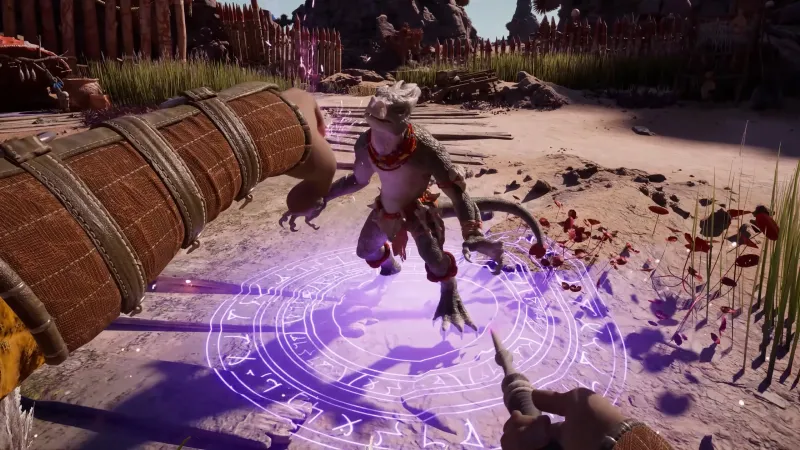
Obsidian also discussed the game’s art style across the Living Lands locale, where players will be trying to resolve a mysterious spiritual plague that has overtaken this part of the fantasy world. The developers have put a big focus on the contract between dull and vibrant, as well as between verdant and corrupted areas, leading to a sense of tension between two extremes in many of the places you might visit. Every site we saw looked beautiful, and it seems like a game destination that will be great fun to explore.
My sense is that many players are hungry for a new first-person fantasy adventure. We’ve yet to get our hands on the game, but today’s dive into some of its systems only increased my belief that Obsidian is pulling together something special with the game.
I’m eager to see how it comes together when Avowed releases on Xbox Series X/S and PC, including Game Pass, in the fall of this year.
Indiana Jones And The Great Circle Launches This Year, First Gameplay Footage Revealed
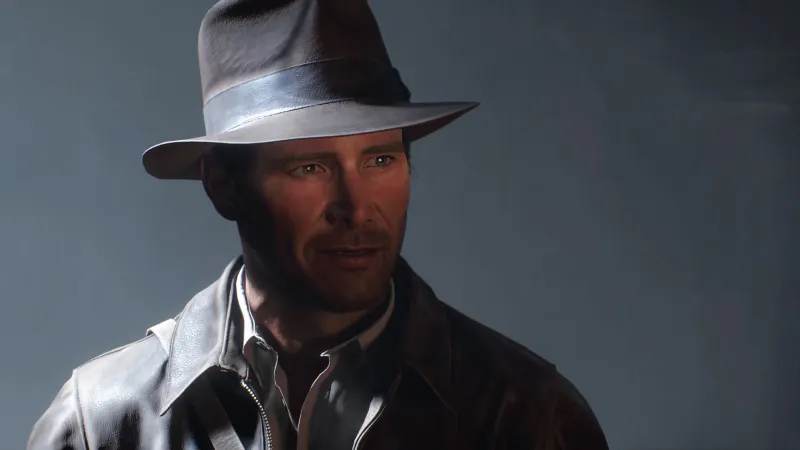
Machine Games’ Indiana Jones game received an official name and got its first gameplay showing during today’s Xbox Developer Direct. We also learned that it’s launching later this year. EW.com also confirmed that though Harrison Ford’s likeness will appear in the game, he will be performed by Troy Baker (The Last of Us, Bioshock Infinite).
The adventure is called Indiana Jones and the Great Circle and stars Indy in his prime doing what he does best: solve puzzles, explore tombs, and pummel Nazis. Set in 1937 between the events of Raiders of the Lost Ark and The Last Crusade, Indy is chasing a stolen relic to solve an ancient, globe-trotting mystery.
Like Machine Games’ modern Wolfenstein games, The Great Circle is a first-person experience. Expect to engage in shootouts and fist fights in this more intimate perspective, but the game does switch to third-person during climbing sequences.
[embedded content]
Indy will be helped by new character Gina, an investigative journalist pursuing her own goals that land her in a mutually beneficial (and banter-heavy) partnership with Dr. Jones. The pair travels to locations such as Egypt, the Vatican, the peaks of the Himalayas, and the sunken temples of Sukhothai to visit various tombs filled with puzzles that Machine Games teases have multiple solutions, either using your wits or, occasionally, by brute force.
In addition to punching enemies’ lights out or shooting them in the face, Indy’s signature whip is incorporated into all aspects of play. It can be used for traversal, such as attaching it to grapple points to scale walls. You can whip objects to create distractions in order to sneak past foes. Or you can just whip goons like they owe Indy money, including yanking distant foes toward you.
Machine Games says The Great Circle emphasizes player choice. You can discover multiple routes through levels to sneak through quietly or go in whipping everything in sight. The gameplay trailer shows off thrilling sequences, such as seeing Indy jumping from plane to plane in a midair dogfight, manning a machine gun to mow down adversaries, and swinging from precarious ledges while whipping foes off tall perches.
Indiana Jones and The Great Circle launches sometime this year for Xbox Series X/S and PC. It’s also coming to Xbox Game Pass.
BMW to Deploy Humanoid Robots – Rivals to the Famous Teslabot – Technology Org
Robotics startup Figure has announced a partnership with BMW Manufacturing to introduce its humanoid robots to the carmaker’s…
Palworld Is Real and So Is The Last Of Us Part II Remastered | GI Show
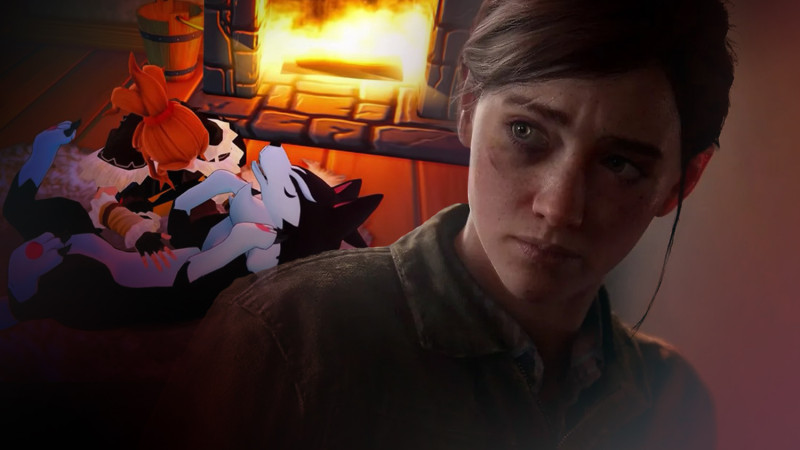
In this week’s episode of The Game Informer Show, the crew discusses real video games you can play, including our early Palworld hands-on reactions and The Last of Us Part II Remastered review. You might’ve heard us describe the former as “Pokémon with guns” previously, but Palworld’s crafting and survival focus make it stand out as its own unique experience. After breaking down the updates packed in with Naughty Dog’s rerelease, we shift our attention to Another Code: Recollection and Final Fantasy XVI.
Watch The Game Informer Show:
[embedded content]
Follow us on social media: Alex Van Aken (@itsVanAken), Marcus Stewart (@MarcusStewart7), Kyle Hilliard (@KyleMHilliard), Wesley LeBlanc (@LeBlancWes)
The Game Informer Show is a weekly gaming podcast covering the latest video game news, industry topics, exclusive reveals, and reviews. Join host Alex Van Aken every Thursday to chat about your favorite games – past and present – with Game Informer staff, developers, and special guests from around the industry. Listen on Apple Podcasts, Spotify, or your favorite podcast app.
The Game Informer Show – Podcast Timestamps:
00:00:00 – Intro
00:06:44 – Palworld
00:24:35 – The Last of Us Part II Remastered
00:26:19 – Spoilers Start for The Last of Us Part II Remastered
00:27:53 – Spoilers End for The Last of Us Part II Remastered
00:35:31 – Another Code: Recollection
00:46:38 – Final Fantasy XVI
01:04:06 – Housekeeping and Listener Questions
